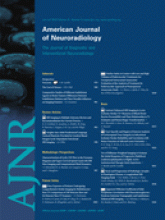Abstract
SUMMARY: BOLD fMRI has provided new insights into postlesional brain language plasticity by providing a noninvasive in vivo approach to evaluate longitudinal changes in brain cortical activation during performance of language tasks. Specifically, BOLD fMRI has provided the opportunity to investigate not only changes in eloquent language cortex resulting from different types of brain pathology such as brain tumors, stroke, and epilepsy but also changes in eloquent language cortex occurring as a result of actual surgical resection of diseased but, nevertheless, partially functional tissue. In addition to reviewing the literature relating to stroke and epilepsy-related language plasticity as well as the more intriguing phenomenon of postsurgical plasticity in the setting of brain tumors, 2 unusual cases illustrating this latter manifestation of language plasticity are briefly described in this review article.
Abbreviations
- BOLD
- blood oxygen level−dependent
- DECS
- direct electrical cortical stimulation (intraoperative mapping)
- fMRI
- functional MR imaging
- GABA
- gamma-aminobutyric acid (neurotransmitter)
- L
- left
- LI
- laterality index
- LIFG
- left inferior frontal gyrus
- MPRAGE
- magnetization-prepared rapid acquisition gradient echo
- NV
- noun-verb (association)
- P
- phonological (rhyming)
- PET
- positron-emission tomography
- R
- right
- RIFG
- right inferior frontal gyrus
- S1
- first (preoperative) fMRI scanning session
- S2
- second (first postoperative) fMRI scanning session
- S3
- third (second postoperative) fMRI scanning session
- SPM
- Statistical Parametric Mapping
- TLE
- temporal lobe epilepsy
- Copyright © American Society of Neuroradiology
Indicates open access to non-subscribers at www.ajnr.org












